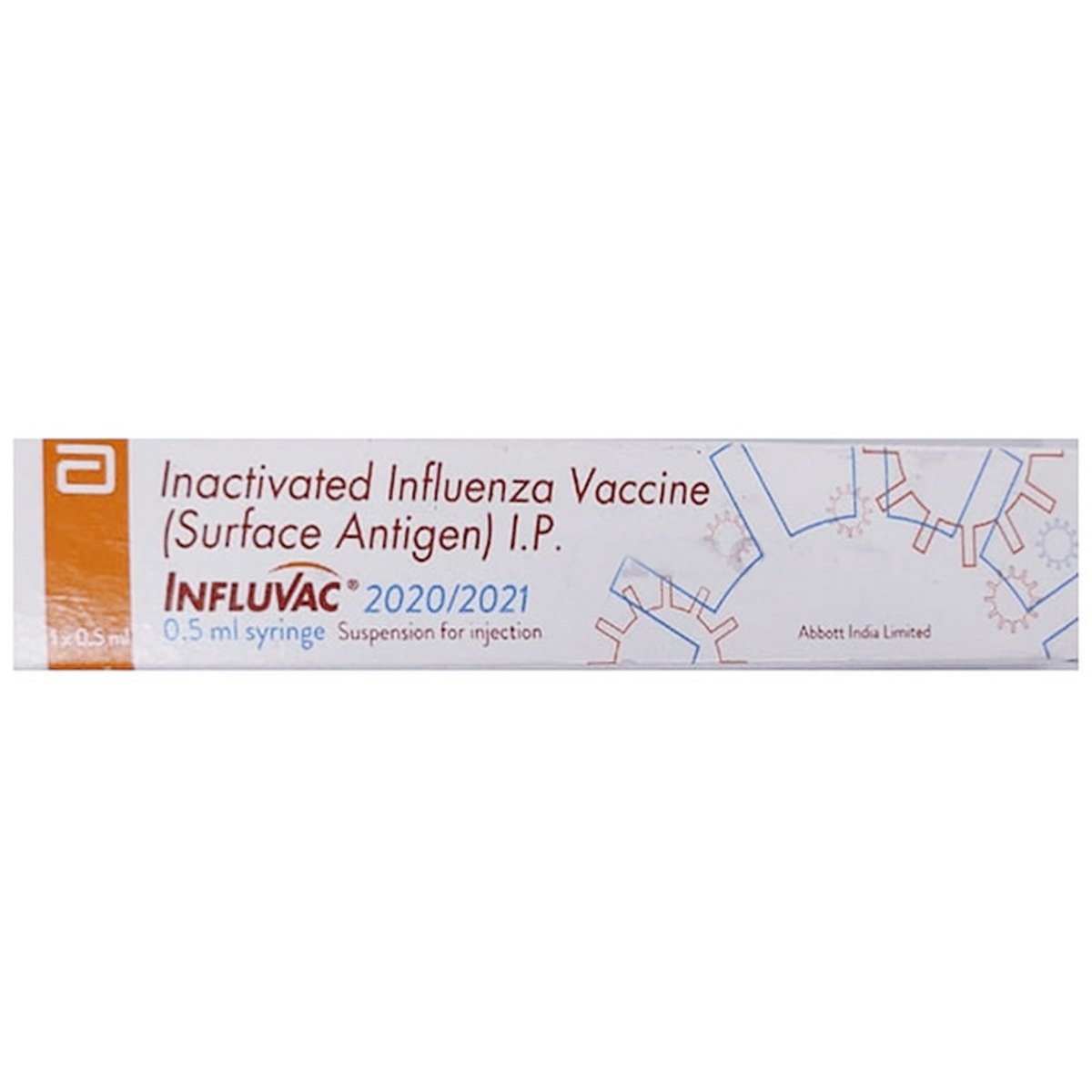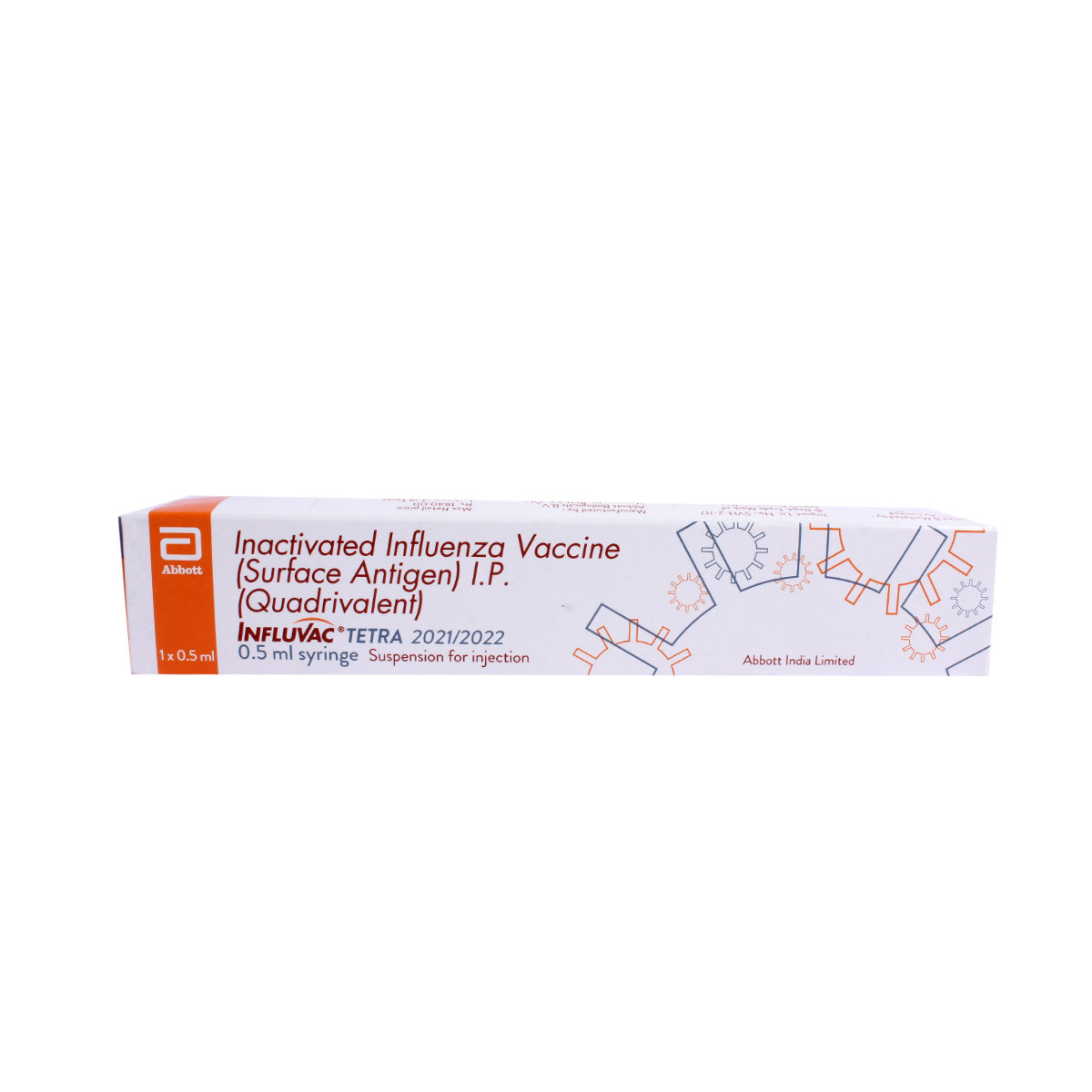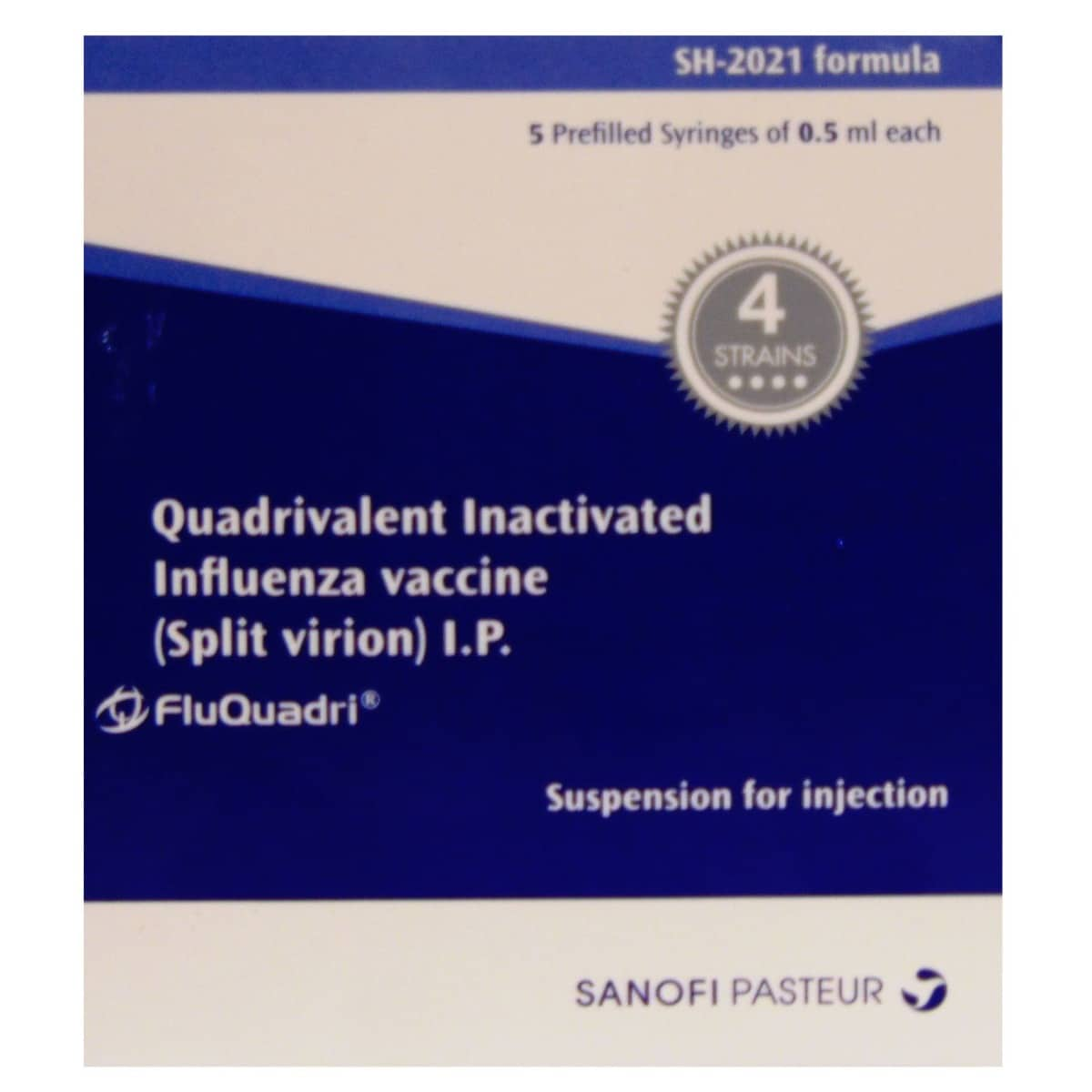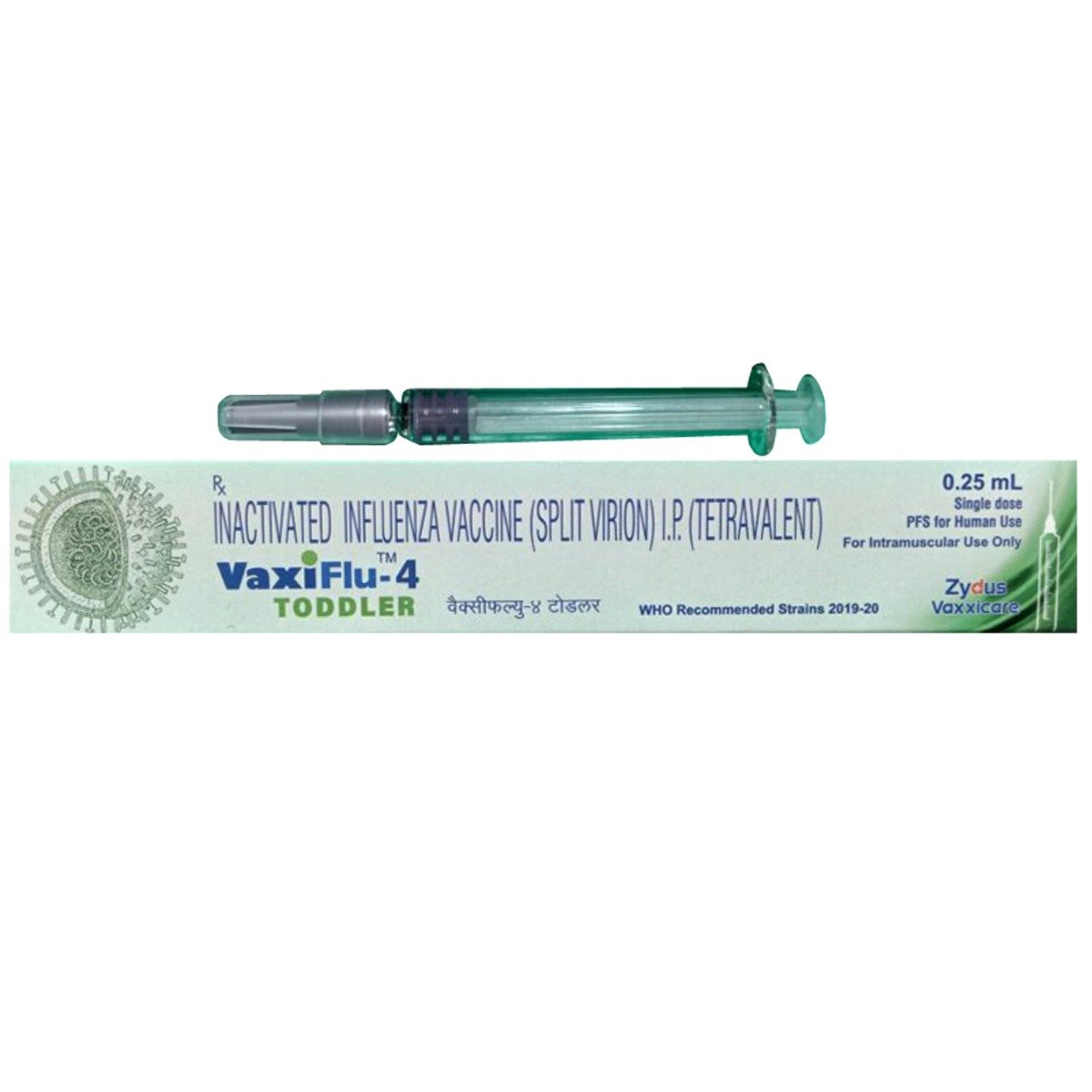Inactivated Rabies Vaccine
About Inactivated Rabies Vaccine
Inactivated Rabies Vaccine belongs to the category of medicine called immunising agent used to prevent rabies disease. Rabies is caused by a virus called the rabies virus. It is transmitted to humans and other animals through close contact with saliva from infected animals (bites, scratches, licks on broken skin and mucous membranes). Rabies' symptoms include pain or itching at the bite wound site, fever, hydrophobia (fear of water), and intolerance to noise, bright light or air.
Inactivated Rabies Vaccine contains Inactivated Rabies Virus that provides long-lasting protection against infection from the rabies virus. Inactivated Rabies Vaccine helps develop immunity by forming antibodies that protect against infection caused by rabies viruses. It is essential to complete the vaccine course to prevent this fatal disease.
Inactivated Rabies Vaccine will be administered by a healthcare professional. Do not self-administer it. In some cases, you may experience some common side effects like feeling unwell, headache, muscle pain, fever, nausea, swelling, redness, itching, or bruising at the injection site. Most of these side effects of Inactivated Rabies Vaccine do not require medical attention and gradually resolve over time. However, if the side effects are persistent or worsen, reach out to your doctor.
If you are allergic to Inactivated Rabies Vaccine or any other vaccines, please tell your doctor. Please inform your doctor if you use any prescription and non-prescription medications, including vitamins and herbal supplements. Consult your doctor before taking Inactivated Rabies Vaccine if you are pregnant, planning for a pregnancy, or breastfeeding. Inactivated Rabies Vaccine is a cold chain vaccine, so it has to be stored in the refrigerator between 2-8°C else its efficiency might be lost. Do not freeze.
Uses of Inactivated Rabies Vaccine
Medicinal Benefits
Inactivated Rabies Vaccine contains ‘Inactivated Rabies Virus’ that provides long-lasting protection against infection from the rabies virus. Inactivated Rabies Vaccine helps develop immunity by forming antibodies that protect against infection caused by rabies viruses. It is essential to complete the vaccine course to prevent this fatal disease. It can be used in two ways: Pre-exposure prophylaxis (vaccinating before you come into contact with rabies virus at the age of 2-10 years) and post-exposure prophylaxis (vaccinating after you have come into contact with rabies virus). The rabies vaccine is used in all age groups.
Directions for Use
Storage
Side Effects of Inactivated Rabies Vaccine
- Feeling unwell
- Headache
- Muscle or joint pain
- Fever
- Nausea
- Pain, swelling, redness, itching, or bruising at the injection site
Drug Warnings
If you are allergic to Inactivated Rabies Vaccine or any other vaccination, please tell your doctor. Inform your doctor if you have a history of allergy (such as hayfever or asthma). Consult your doctor before taking Inactivated Rabies Vaccine if you are pregnant, planning for a pregnancy, or breastfeeding mother. Please inform your doctor if you are using any prescription and non-prescription medications, including vitamins and herbal supplements.
Drug Interactions
Drug-Drug Interactions: Inactivated Rabies Vaccine may interact with corticosteroids (e.g. hydrocortisone, methylprednisolone, prednisolone, dexamethasone, prednisone) and immunosuppressive drugs (e.g. azathioprine, mycophenolate, cyclosporine).
Drug-Food Interactions: No interaction found.
Drug-Disease Interactions: Inactivated Rabies Vaccine should be given with caution, especially if you have a history of asthma or hay fever and blood disorder.
Drug-Drug Interactions Checker List:
Safety Advice

Alcohol
cautionNo interaction was found/established. Please consult your doctor if you have any concerns.

Pregnancy
cautionIf you are pregnant, consult, and seek advice from your doctor before receiving the vaccine.

Breast Feeding
cautionPlease tell your doctor, if you are a breastfeeding mother before receiving the vaccine.

Driving
cautionIt is not known if Inactivated Rabies Vaccine affects your ability to drive or operate machinery. Drive only if you are alert.

Liver
cautionLimited information is available regarding the usage of Inactivated Rabies Vaccine in patients with liver impairment. Let your doctor know if you have liver disease/conditions.

Kidney
cautionLimited information is available regarding the usage of Inactivated Rabies Vaccine in patients with kidney impairment. Let your doctor know if you have kidney disease/conditions.

Children
safe if prescribedInactivated Rabies Vaccine can be given safely to children provided the dose has been prescribed by a doctor.
Habit Forming
Diet & Lifestyle Advise
- Avoid intake of processed foods, foods high in sugar and fat, as these may cause inflammation.
- Add foods rich in magnesium like avocados, flax seeds, corn, oatmeals, curd, pumpkin, and high protein foods such as milk, egg, meat in your daily diet.
- Opt for food and drinks high in Omega 3 fatty acids to get relief from pain, swelling, and inflammation. Omega 3 fatty acid-enriched foods include flaxseeds, walnut, soybean oil, salmon, and tuna fish if you prefer non-veg.
- Wounds should be washed immediately with soap and water for 10–15 minutes. It should be cleaned thoroughly with 70% alcohol/ethanol or povidone-iodine, if available.
- Do not apply irritants to the wound, such as chilli powder, plant juices, acids, or alkali.
- Do not cover the wound with dressings or bandages.
- Take the person to a healthcare facility for further treatment immediately.
Special Advise
- Immunosuppressive treatments, including long-term corticosteroid therapy, may interfere with antibody production and cause rabies' failure. It is advisable to perform a serological test 2 to 4 weeks after the last injection.
- Even if you have been vaccinated, you should still take precautions to avoid contact with rabies if you are travelling in an area where rabies is found. Please contact a doctor immediately if you have been bitten or scratched by an animal in an area with a risk of rabies.
Patients Concern
Disease/Condition Glossary
Rabies: It is a viral disease that causes severe infection, progressive and fatal inflammation of the brain and spinal cord. It is transmitted to humans and other animals through close contact with saliva from infected animals (bites, scratches, licks on broken skin and mucous membranes). Once symptoms of the disease develop, rabies is fatal to both animals and humans. It has two forms: Furious rabies (characterised by hyperactivity and hallucinations) and Paralytic rabies (characterised by paralysis and coma). Furious rabies symptoms are hyperactivity, excitable behaviour, hydrophobia (fear of water), aerophobia (fear of drafts or fresh air) and death that occurs after a few days due to cardio-respiratory arrest. Paralytic rabies runs a less dramatic and usually longer course than the furious form. Symptoms are muscles gradually becoming paralysed, starting at the bite or scratch site, a coma slowly develops, and eventually, death occurs.
FAQs
Inactivated Rabies Vaccine works by helping the body produce substances (antibodies) that resist infection from viruses causing rabies.
Yes, Inactivated Rabies Vaccine is safe and potent and can be given to pregnant women. It does not affect fetal development during pregnancy. However, If you are pregnant, Inform your doctor before receiving the vaccine.
The common sign and symptoms of rabies in humans include pain or itching at the site of the bite wound, fever, hydrophobia (fear of water), intolerance to noise, bright light or air, irritability and depression, at a later stage the mere sight of water may provoke spasms in the neck and throat.
Rabies is an infectious disease transmitted from animals to humans, which is caused by a rabies virus. Rabies has two forms: frantic and paralytic. Frantic rabies is the most common form of human rabies.







